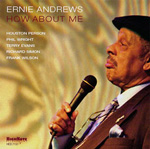Home » Jazz Articles » Book Review » Florence Mills: Harlem Jazz Queen
Florence Mills: Harlem Jazz Queen
 Florence Mills: Harlem Jazz Queen
Florence Mills: Harlem Jazz QueenBill Egan
Hardcover; 368 pages
ISBN: 0-8108-5007-9
Scarecrow Press
2006
Singer Florence Mills (1896-1927) is known to most jazz fans as a name in the footnotes, the woman who inspired Duke Ellington's marvelous composition "Black Beauty." Mills' obscurity is due mostly to the unfortunate absence of any recordings or films of her work. Nevertheless, based on the accolades Mills received during her lifetime, it's clear she was an artist of considerable genius, a magnetic performer who sang, danced, and acted with an absolutely fresh style. Bill Egan's excellent new biography Florence Mills: Harlem Jazz Queen brings this crucial figure back to life, showing her important role in jazz and indeed African-American history.
Mills grew up in Goat Alley, Washington, D.C.'s infamous slum, where she quickly demonstrated natural gifts as a singer and dancer. By age seven Mills was performing in theaters and private homes, and she rapidly developed a name on the vaudeville and burlesque circuits. Egan skillfully interweaves Mills' personal journey with historical background, showing the vitality and rough edges in this rich period of early jazz. Mills paid her dues the old-fashioned way, playing small venues all over the country, putting in endless hours rehearsing and traveling. One gets a clear sense of Mills' determination and courage, and the nearly ceaseless effort she expended honing her craft.
In 1921 Mills landed her breakthrough role, the lead in the hit musical "Shuffle Away." After that her star rose quickly, including long stints in London and Paris, where she was received with great enthusiasm and lauded as an international phenomena. Mills could do it all: she sang blues, "hot jazz," and ballads, plus she danced, acted, and was an accomplished comedian and mime. Luminaries such as Jelly Roll Morton, James P. Johnson, and Willie "The Lion" Smith pop up throughout the manuscript, making it clear why Mills was dubbed "The Queen of Jazz." It's also clear that Mills was a special personality; she was an intelligent woman with a warm, open heart, and even at the height of her fame showed a remarkable lack of affectation. She was also a staunch supporter of equal rights for African-Americans, and was outspoken on this issue both in the press and personally. In fact, her signature song "I'm a Little Blackbird" was a plea for racial equality, and during her life Mills shattered many racial barriers and worked tirelessly for the advancement of her race.
Mills suffered from pelvic tuberculosis, and she died at age 31 after an unsuccessful operation. Her funeral in Harlem drew more than 150,000 people, as well as a worldwide outpouring of grief. It seems inconceivable that such a major artist should have slipped into almost total obscurity; thank goodness for Egan, whose ten years of meticulous, tenacious research has at last given Mills a proper biography. And although her unique, birdlike voice and captivating performing skills can only be known through description, the book's rich selection of photographs shows Mills shining with a vitality that's inspiring even eight decades after her death.
Tags
PREVIOUS / NEXT
Support All About Jazz
 All About Jazz has been a pillar of jazz since 1995, championing it as an art form and, more importantly, supporting the musicians who make it. Our enduring commitment has made "AAJ" one of the most culturally important websites of its kind, read by hundreds of thousands of fans, musicians and industry figures every month.
All About Jazz has been a pillar of jazz since 1995, championing it as an art form and, more importantly, supporting the musicians who make it. Our enduring commitment has made "AAJ" one of the most culturally important websites of its kind, read by hundreds of thousands of fans, musicians and industry figures every month.






















